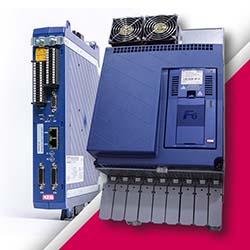The wireless sensor doesn’t need any cabling. This retrofit angle sensor can be attached to several types of manual rotary valves, including ball and butterfly valves.
 Factories Can Save Up to 90% in Valve Monitoring Costs With Wireless IoT Sensors
Factories Can Save Up to 90% in Valve Monitoring Costs With Wireless IoT Sensors

Pertti Kujala | Haltian
Factories and plants in industries – such as chemical processing, pulp and paper, water and waste-water treatment, have seen the benefits of remote valve monitoring. Traditional retrofitted monitoring solutions, however, are costly and slow to deploy for factories with thousands of manual valves of different types.
There is a more cost-effective alternative – factories have evidenced a 90 percent reduction in retrofitting investment, by using industry-grade wireless sensors and Industrial IoT technologies.
In this article, Industrial IoT specialist, Pertti Kujala, the Director of Smart Factory business of Haltian, talks about retrofit valve monitoring, and explains how factories can save substantial costs.
What’s Remote Valve Monitoring?
Factories and plants in the chemical process industries, pulp and paper, water and waste-water treatment, and other sectors are, first and foremost - known by the massive networks of process pipelines, controlled by thousands of hand-operated valves. Until recently, the systems have been operating successfully and effectively for many years with different types of hand valves.
The remote monitoring of these manual valves is becoming even more critical in process industries as the Industry 4.0 transformation sweeps through the factories worldwide. To maintain future competitiveness – industrial enterprises need to increase production efficiency, optimize processing operations, prevent unnecessary outages, and improve safety.
With the integration of SCADA with field instruments, and also smartphones, tablets, and other mobile solutions, industrial automation and process control is growing rapidly for the greater good.
Benefits for Factories and Plants
Remote valve monitoring is made up of several components: and it detects the valve position with a retrofit sensor device, mounted on the hand-operated valve. Position sensors are divided into angular position sensors and linear position sensors. The sensor device then reports the position data in a digital format to the factory’s central control system.
With an ideal remote monitoring solution, positions of all valves in a factory can be monitored on the central control system in the factory in real-time - from thousands of different points, along the process pipelines. Remote monitoring of process control valves can provide multiple benefits to factories in countless different ways:
- Bring massive cost savings
- Enable faster process recovery after maintenance breaks
- Increase safety at the plant
- Reduce the occurrence of errors and quality deviations
- Provide valuable analytics, and help to prevent unplanned downtime.
The benefits from remote valve monitoring amid the ongoing Industry 4.0 transformation have propelled the remote monitoring and control market onto a steady growth trajectory with a CAGR of 4.5 percent. It is expected to reach USD 27 billion by 2023 globally.
Challenges of Traditional Retrofitting Solutions
Many factories and plants hesitate to invest in remote valve monitoring expansions, despite rapid market growth and the significant economic benefits,. Retrofitting a monitoring system on thousands of different types of valves - some of which can be very old, often manufactured by different vendors - is costly and time-consuming.
The author has compiled a rundown of the main challenges in retrofitting remote monitoring on existing valves.
The current valve position sensors in the market often fit only one type of valve, and different valve manufacturers have their own specific position sensor devices. This increases the sensor device hardware investment for factories, and procurement involving several manufacturers’ products can be time-consuming
The traditional field sensor devices use several industrial communication protocols - such as Foundation Fieldbus, Profibus, DeviceNet, AS-Interface, and the HART protocol, for communicating with the factory's SCADA or SAS system. This can require costly software interface customization, especially if sensors of several different vendors are included in the system.
Most current industrial valve position sensors and detector products in the market require physical cabling for electricity and data. When there are thousands of valves in a factory, then the cabling becomes a significant cost, and extends the deployment time to months, and sometimes years.
The traditional position sensor devices available currently in the market are built, based on the same extreme industrial standards, as the critical, operational field hardware. This could, however, be deemed to be over-engineering in many industrial applications. The position sensors are typically mounted on top of the primary operational hardware, such as the valves – and the sensors are not directly exposed to the harshest conditions. This extreme product design practice has increased the sales prices of the traditional position sensor products, but high-quality, enterprise-grade products with a lower price tag are equally fit for this purpose in most use-cases.
These challenges slow down the deployments of retrofit remote valve monitoring solutions in global factories. The question that arises is: How can one reduce these investments and make retrofitting easier?
A game-changing solution could come from the Internet of Things (IoT) technology sector. Developments with IoT sensor devices and wireless technologies have taken a quantum leap ahead, in recent years.
Game-Changing Technology in Remote Valve Monitoring
Haltian, the product development specialist and Industrial IoT provider, together with a global process industry company have developed a smart, industry-grade wireless Angle sensor for remote valve monitoring. It combines the latest industry-grade wireless technologies and ultra-durable materials, With this solution, factories can reduce their retrofitting costs by up to 90% - compared to traditional alternatives.
What can the Angle Sensor do?
The wireless sensor doesn’t need any cabling. This retrofit angle sensor can be attached to several types of manual rotary valves, including ball and butterfly valves.
It is delivered with a mounting adapter kit to make installation quick and easy. There is a clamp that mounts the sensor device onto a pipe. Its rotating position detector disc is attached to the valve lever with a simple clip.
Inside the Angle sensor device are magnetic and mechanical sensors to detect the valve’s position, with an accuracy of one degree. It reports any position changes over the wireless connection - to the factory or plant’s central control system.
After being switched on, the sensor automatically connects to the other sensor devices using the Wirepas Mesh technology.
Whenever required, the Wirepas Mesh wireless protocol in the Angle sensor device can automatically optimize the radio transmission power and frequency band. No base stations or any wireless network infrastructure is needed in the factory – the Angle sensor devices function as access points for other sensor devices and form a fully-meshed network, which transmits data packets, hop-by-hop to the right destination.
The power-frugal Angle sensor device is able to run for several years with just a battery.
How Can it Benefit Factories?
Throughout a multi-year industrial investment horizon, the wireless Angle sensor approach can bring factories and plants CAPEX and OPEX savings. Here are the most prominent lifetime benefits:
- Installation onto your valves is quick and easy – no cabling is needed, and it is delivered completely pre-configured. It reduces the deployment and operational costs, when thousands of valves are involved.
- Works with several types of rotary valves including the ball and butterfly valves made by any manufacturer – reduces hardware costs and makes procurement easy
- Avoid further costly software customization for industrial communication protocols – the Angle sensor integrates straight into the central control system through a simple application programming interface (API).
- The changes in valve position data is reported to your control system – this enables you to adjust factory processes faster to their optimal performance levels.
- With up-to-date information about all valve positions, you can avoid accidents and increase the occupational safety at the plant.
- Avoid environmental damage by making sure that hazardous substances are not released out of the system.
- Manual valves are typically adjusted by the operation staff. They carry out the adjusting work based on their tacit knowledge – valve monitoring enables you to digitize and store this tacit knowledge.
- End-to-end data collected from all the valves, enables you to measure and optimize the processes.
In Conclusion
Remote Valve Monitoring provides factories and plants with significant benefits – this translates into cost savings, better safety, and continuous process optimization. However, the digitalization of process control valves has been dragging for too long, due to high retrofitting investments.
The new industry-grade Angle sensor and wireless Industrial IoT technologies can change the Remote Valve Monitoring game with an easy, yet robust alternative with up to 90% lower investment!
 About the Author
About the Author
Pertti Kujala is the Director of Thingsee Smart Factory solutions at Haltian. After joining Haltian in 2012, Pertti has worked in several IoT leadership positions in the company. Pertti began his career in Nokia in 2003, where he successfully held various mechanical design, engineering, and concepting roles. In the luxury device maker, Vertu, in the UK, Pertti worked as a senior mechanical designer in 2007-2009 and has designed and developed new decoration assemblies with materials such as leather, sapphire, ceramics, and precious metals. Pertti’s extracurricular passions include architecture. Pertti holds a degree of M.Sc. in Mechanical Engineering from the University of Oulu in Finland.
About Haltian
Haltian has been providing device manufacturers with world-class product design and engineering services, since 2012. Thingsee, the proven IoT technology platform developed by Haltian, enables faster IoT launches for mass-scale deployments. In 2018, Haltian was heralded by research leader Gartner to be deemed a Cool Vendor for its IoT services and in 2019, Haltian became an AWS Advanced Technology Partner.
The content & opinions in this article are the author’s and do not necessarily represent the views of ManufacturingTomorrow
Comments (0)
This post does not have any comments. Be the first to leave a comment below.
Featured Product

